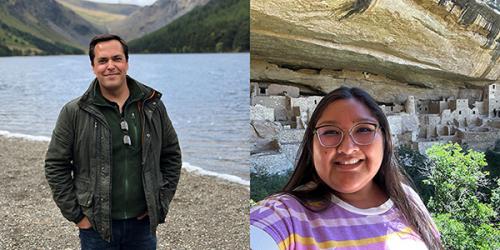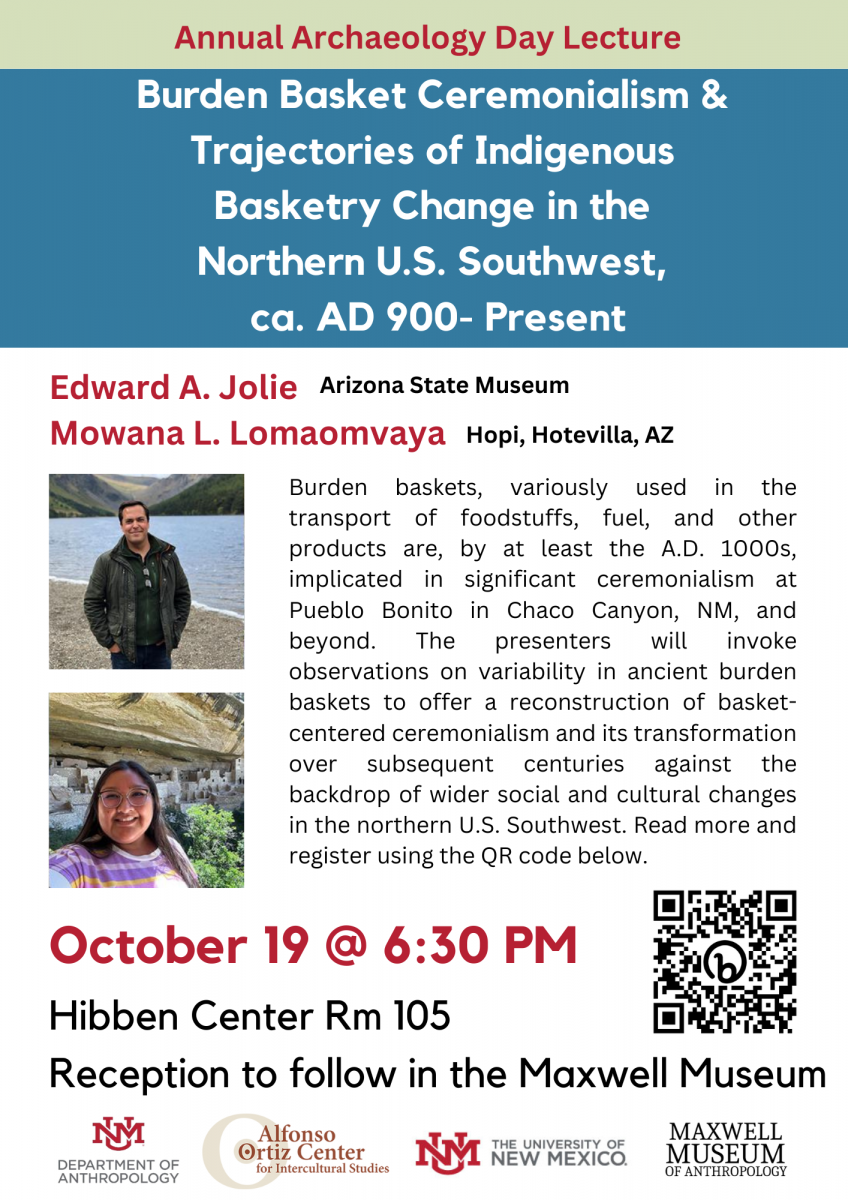
*The in-person lecture will also be available via Zoom. Click here to register*
Join us for a Celebration of International Archaeology Day!
Lecture: 6:30-7:30 pm followed by a reception in the Maxwell Museum of Anthropology.
Burden Basket Ceremonialism and Trajectories of Indigenous Basketry Change in the Northern U.S. Southwest, ca. AD 900 – Present
Dr. Edward A. Jolie (Arizona State Museum and School of Anthropology, University of Arizona) and Mowana L. Lomaomvaya (M.A. and MLS) (Hopi, Hotevilla, Arizona)
Recent scholarship highlights the remarkable antiquity and dynamism of Indigenous religious practices across the U.S. Southwest. Examination of museum collections, radiocarbon dates on perishable material culture, and scrutiny of ethnographic records points to the interconnectedness of new technologies and likely shifting cultural boundaries in the evolution of ritual practices with concrete links to contemporary Puebloan practices. Burden baskets, variously used in the transport of foodstuffs, fuel, and other products are, by at least the A.D. 1000s, implicated in significant ceremonialism at Pueblo Bonito in Chaco Canyon, New Mexico, and beyond. Surviving archaeological examples of burden baskets and effigies molded in clay evidence strong symbolic connections to women's productive and reproductive labors and have been taken to suggest the emergence of a prominent woman's sodality. Here we invoke observations on variability in ancient burden baskets, ceramic effigies, and rock image depictions of those effigies to offer a reconstruction of basket-centered ceremonialism and its transformation over subsequent centuries against the backdrop of wider social and cultural changes in the northern U.S. Southwest. The resulting narrative articulates both continuity and change in women’s ritual practices involving basketry while suggesting broader implications for understanding the origins of distinctive historic Hopi, and neighboring Pueblo, basketry traditions.
PARKING
Where can I park if I am a visitor?
We have free reserved parking spots immediately to the west of our Museum; next to those are pay-for-parking spots. Any vehicle with a valid state-issued handicap placard can park anywhere on the UNM campus, except in spaces labeled as fire lanes, reserved, and no loading zones.
Where can I park if I work at UNM?
If you are staff, faculty, or students with a non-expired UNM parking permit of any category, you can park close to the Museum in Lot C or B (north of the museum), or elsewhere, after 3:45 PM and not be fined as long as your permit is showing.
